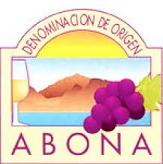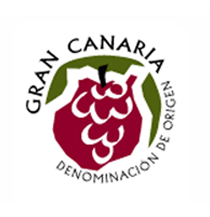Canary Islands DOs (Part I)

The Canary Islands are an archipelago in the Atlantic Ocean, located just off the northwest coast of mainland Africa. The islands are (from largest to smallest): Tenerife, Fuerteventura, Gran Canaria, Lanzarote, La Palma, La Gomera, El Hierro, and the smaller islands La Graciosa, Alegranza, Montaña Clara, Roque del Este, Roque del Oeste and Isla de Lobos.
The origin of the Canaries is volcanic, and Tenerife houses the third largest volcano in the world, Mount Teide, which has been dormant since 1909. This, together with the subtropical climate which is characteristic of the islands, the magnificent beaches of dark volcanic sand, and their excellent Canary wines make it a popular tourist destination.
DOs (designations of origin) of the Canary Islands
The volcanic origin of the Canary soils result in a very special grape. Almost 970 million sq. feet are used for vine plantations, specially for the Malvasía, Moscatel, Gual and Sabro varieties. The production of Canary wine is quite low, in fact it doesn't even account for half of the consumption of the region.
DO Abona

Established in 1995, it is Tenerife's most recent designation of origin and it's still in its expansion period. The DO Abona is found in the southern part of Tenerife, and enjoys a warm and dry Mediterranean climate. Most of the wines produced by the DO Abona are white Canary wines, so the most popular grape variety used is the Listan Blanco (which occupies almost 80% of the whole plantation for this designation of origin), but Bastardo Blanco, Bermejuela, Forastera blanca, Gual, Malvasía, Moscatel, Pedro Ximenez, Sobro, Torrentes, Verdello and Vijariego are also allowed. In the case of red wines, Listan Negro, Bastardo negro, Malvasía rosada, Moscatel negro, Negramoll, Tintilla and Vijariego negra are the varieties used.
The DO Abona produces white, rosé and red wine, in that order of preference. They also produce a "classic sweet" wine through over ripening the grapes (of the Moscatel or Malvasía variety) to up the sugar levels. Their alcohol content is as follows:
- White wine, with a minimum alcohol content of 10.5%
- Rosé wine, with a minimum alcohol content of 11%
- Red wine, with a minimum alcohol content of 11.5%
- Classic sweet wine, with a minimum alcohol content of 15%
DO El Hierro

El Hierro is the most western and southern of all the Canary Islands, and also the smallest. The DO El Hierro was established in 1994, and there are three main production areas: El Golfo, El Pinar and Echedo. It's believed that the first vines in El Hierro were planted by the Englishman John Hill, who wanted to produce hard liquor. El Hierro wasn't invaded by the phylloxera plague that swept the rest of the islands, so it's one of the few places were it's still possible to find older varieties of grape that in other regions were thought to be extinct.
As in most of the islands in the Canaries, white grapes are predominant over red grapes. The most used varieties are Verijadiego, Albillo, Bastarda, Bermejuela, Breval, Burrablanca, Gual, Forastera, Listan, Malvasía, Moscatel, Pedro Ximénez, Torrontés and Verdello in white wines, and Vijariego negro, Listán negro, Negramoll and Torrontés in red wines.
The alcohol level in the Canary wines of this DO are as follows:
- Red wine, with a minimum alcohol content of 12%
- White wine, with a minimum alcohol content of 11%
- Rosé wine, with a minimum alcohol content of 11.5%
- Sparkling wine, with a minimum alcohol content between 10.5% and 13%
DO Gran Canaria

Gran Canaria is the second most populated island in the Canary archipelago. The trade winds have set astounding landscape differences between the wayward and leeward areas of the island so, despite its size, Gran Canaria has many climatic varieties between regions, and it has been dubbed "The Miniature Continent". A study from the Syracuse University in New York has shown that Las Palmas de Gran Canaria, the insular capital, has the best climate in the world.
Gran Canaria used to have two different designations of origin: DO Monte Lentiscal and DO Gran Canaria, each with their own production area, but in 2006 they where unified under the common name DO Gran Canaria. Nevertheless, Monte Lentiscal is still considered a separate area, and the Canary wines from this region have special characteristics. DO Gran Canaria produces more red wine than white, and the grape varieties used are Listán negro, Negramoll, Tintilla and Malvasía rosada for the reds; Malvasía, Gual, Marmajuelo o Bermejuela, Vijariego, Albillo and Moscatel de Alejandría for the whites.
The alcohol levels in the wines of DO Gran Canaria are as follows:
- Red wine, with a minimum alcohol content of 11%
- White wine, with a minimum alcohol content of 10%
- Rosé wine, with a minimum alcohol content of 11%
The alcohol levels in the wines of Monte Lentiscal are as follows:
- Red wine, with a minimum alcohol content of 14%
- White wine, with a minimum alcohol content of 14%
- Rosé wine, with a minimum alcohol content of 13%
There are another six other designations of origin that produce Canary wines: DO Lanzarote, DO La Palma, DO Tacoronte - Acentejo, DO Valle de Güimar, DO Valle de la Orotava and DO Ycoden Daute Isora
Spanish Wine History
Spanish Wine Regions and DO
Spanish Wine Tours
Top Spanish designations of origin
Best Spanish Wines
Spanish Wine Production
Spanish Wine Types
Spanish Grapes
Spanish Sparkling Wine: Cava
Sherry Wine
Spanish Wine Cocktails
Spanish Wines in the World
Spanish Wine Prizes
Enotourism
Spanish spirits and liquors
Argentina Wines
Chilean Wines
Other sites